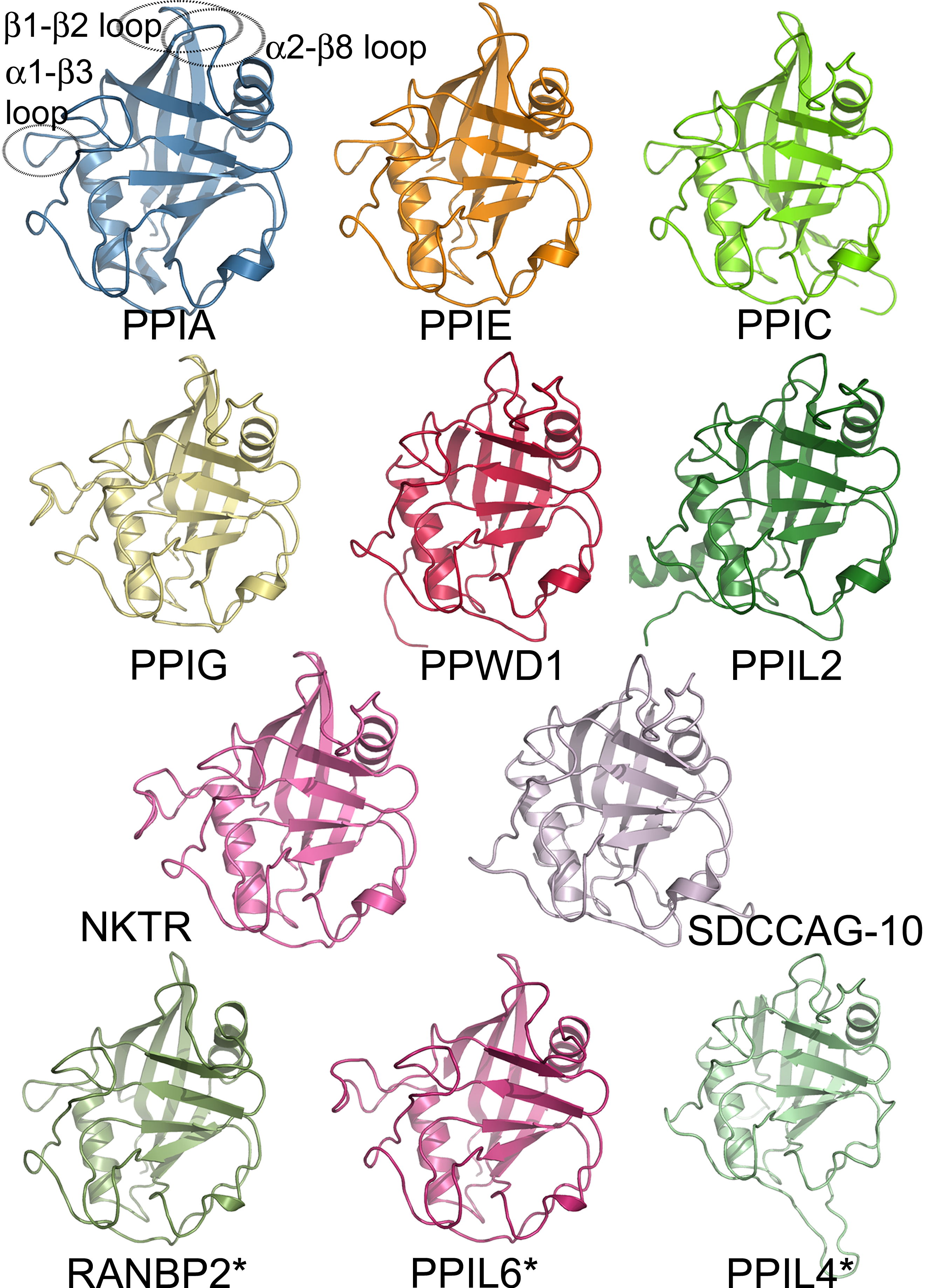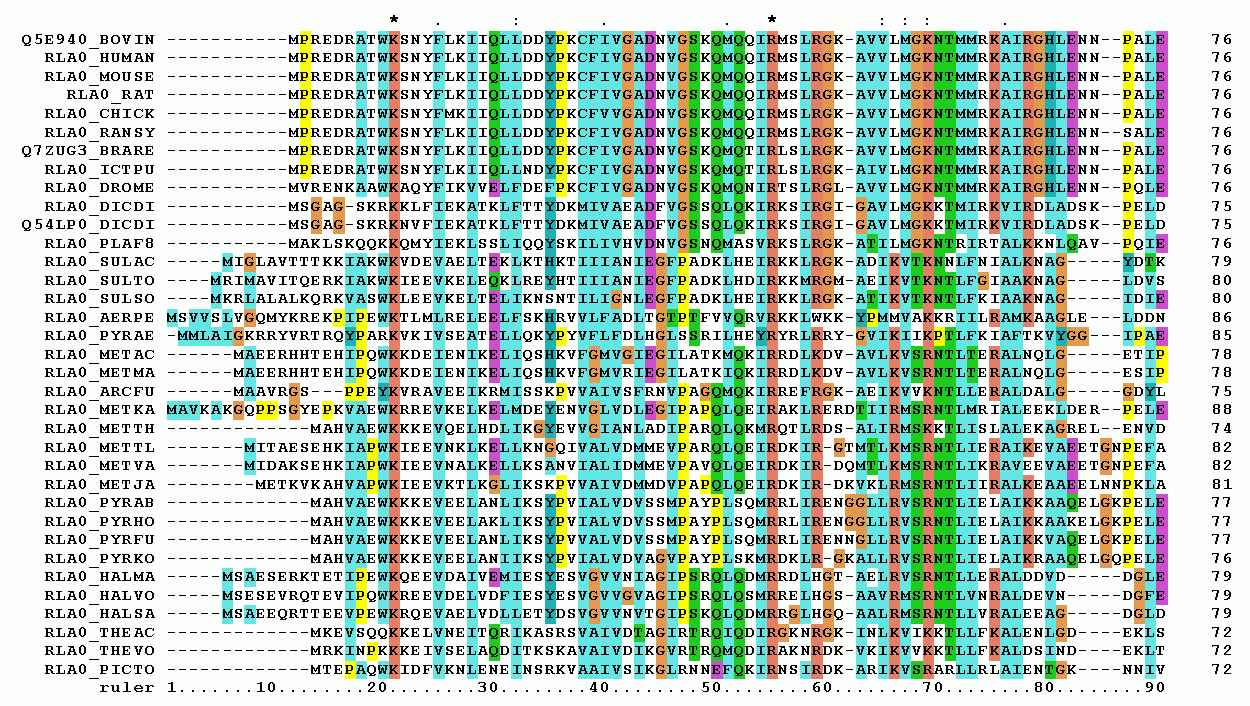|
TIGRFAMs
TIGRFAMs is a database of protein families designed to support manual and automated genome annotation. Each entry includes a multiple sequence alignment and hidden Markov model (HMM) built from the alignment. Sequences that score above the defined cutoffs of a given TIGRFAMs HMM are assigned to that protein family and may be assigned the corresponding annotations. Most models describe protein families found in Bacteria and Archaea. Like Pfam, TIGRFAMs uses the HMMER package written by Sean Eddy. History TIGRFAMs was produced originally at The Institute for Genomic Research (TIGR) and its successor, J. Craig Venter Institute (JCVI), but it moved in April 2018 to the National Center for Biotechnology Information The National Center for Biotechnology Information (NCBI) is part of the National Library of Medicine (NLM), a branch of the National Institutes of Health (NIH). It is approved and funded by the government of the United States. The NCBI is lo ... (NCBI). TIGRFAMs re ... [...More Info...] [...Related Items...] OR: [Wikipedia] [Google] [Baidu] |
InterPro
InterPro is a database of protein families, protein domains and functional sites in which identifiable features found in known proteins can be applied to new protein sequences in order to functionally characterise them. The contents of InterPro consist of diagnostic signatures and the proteins that they significantly match. The signatures consist of models (simple types, such as regular expressions or more complex ones, such as Hidden Markov models) which describe protein families, domains or sites. Unknown sequences are searched to create homology models. Each of the member databases of InterPro contributes towards a different niche, from very high-level, structure-based classifications ( SUPERFAMILY and CATH-Gene3D) through to quite specific sub-family classifications ( PRINTS and PANTHER). InterPro's intention is to provide a one-stop-shop for protein classification, where all the signatures produced by the different member databases are placed into entries within the Inte ... [...More Info...] [...Related Items...] OR: [Wikipedia] [Google] [Baidu] |
HMMER
HMMER is a free and commonly used software package for sequence analysis written by Sean Eddy. Its general usage is to identify homologous protein or nucleotide sequences, and to perform sequence alignments. It detects homology by comparing a ''profile-HMM'' (a Hidden Markov model constructed explicitly for a particular search) to either a single sequence or a database of sequences. Sequences that score significantly better to the profile-HMM compared to a null model are considered to be homologous to the sequences that were used to construct the profile-HMM. Profile-HMMs are constructed from a multiple sequence alignment in the HMMER package using the ''hmmbuild'' program. The profile-HMM implementation used in the HMMER software was based on the work of Krogh and colleagues. HMMER is a console utility ported to every major operating system, including different versions of Linux, Windows, and macOS. HMMER is the core utility that protein family databases such as Pfam and ... [...More Info...] [...Related Items...] OR: [Wikipedia] [Google] [Baidu] |
Protein Families
A protein family is a group of evolutionarily related proteins. In many cases, a protein family has a corresponding gene family, in which each gene encodes a corresponding protein with a 1:1 relationship. The term "protein family" should not be confused with family as it is used in taxonomy. Proteins in a family descend from a common ancestor and typically have similar three-dimensional structures, functions, and significant sequence similarity. Sequence similarity (usually amino-acid sequence) is one of the most common indicators of homology, or common evolutionary ancestry. Some frameworks for evaluating the significance of similarity between sequences use sequence alignment methods. Proteins that do not share a common ancestor are unlikely to show statistically significant sequence similarity, making sequence alignment a powerful tool for identifying the members of protein families. Families are sometimes grouped together into larger clades called superfamilies based on stru ... [...More Info...] [...Related Items...] OR: [Wikipedia] [Google] [Baidu] |
DNA Annotation
In molecular biology and genetics, DNA annotation or genome annotation is the process of describing the structure and function of the components of a genome, by analyzing and interpreting them in order to extract their biological significance and understand the biological processes in which they participate. Among other things, it identifies the locations of genes and all the coding regions in a genome and determines what those genes do. Annotation is performed after a genome is sequenced and assembled, and is a necessary step in genome analysis before the sequence is deposited in a database and described in a published article. Although describing individual genes and their products or functions is sufficient to consider this description as an annotation, the depth of analysis reported in literature for different genomes vary widely, with some reports including additional information that goes beyond a simple annotation. Furthermore, due to the size and complexity of sequenced ... [...More Info...] [...Related Items...] OR: [Wikipedia] [Google] [Baidu] |
Multiple Sequence Alignment
Multiple sequence alignment (MSA) is the process or the result of sequence alignment of three or more biological sequences, generally protein, DNA, or RNA. These alignments are used to infer evolutionary relationships via phylogenetic analysis and can highlight homologous features between sequences. Alignments highlight mutation events such as point mutations (single amino acid or nucleotide changes), insertion mutations and deletion mutations, and alignments are used to assess sequence conservation and infer the presence and activity of protein domains, tertiary structures, secondary structures, and individual amino acids or nucleotides. Multiple sequence alignments require more sophisticated methodologies than pairwise alignments, as they are more computationally complex. Most multiple sequence alignment programs use heuristic methods rather than global optimization because identifying the optimal alignment between more than a few sequences of moderate length is prohibiti ... [...More Info...] [...Related Items...] OR: [Wikipedia] [Google] [Baidu] |
Hidden Markov Model
A hidden Markov model (HMM) is a Markov model in which the observations are dependent on a latent (or ''hidden'') Markov process (referred to as X). An HMM requires that there be an observable process Y whose outcomes depend on the outcomes of X in a known way. Since X cannot be observed directly, the goal is to learn about state of X by observing Y. By definition of being a Markov model, an HMM has an additional requirement that the outcome of Y at time t = t_0 must be "influenced" exclusively by the outcome of X at t = t_0 and that the outcomes of X and Y at t < t_0 must be conditionally independent of at given at time . Estimation of the parameters in an HMM can be performed using maximum likelihood estimation. For linear chain HMMs, the Baum–Welch algorithm can be used to estimate parameters. Hidden Markov models are known for their applications to thermodynamics, statistical mechanics, physics, chem ... [...More Info...] [...Related Items...] OR: [Wikipedia] [Google] [Baidu] |
Pfam
Pfam is a database of protein families that includes their annotations and multiple sequence alignments generated using hidden Markov models. The latest version of Pfam, 37.0, was released in June 2024 and contains 21,979 families. It is currently provided through InterPro website. Uses The general purpose of the Pfam database is to provide a complete and accurate classification of protein families and domains. Originally, the rationale behind creating the database was to have a semi-automated method of curating information on known protein families to improve the efficiency of annotating genomes. The Pfam classification of protein families has been widely adopted by biologists because of its wide coverage of proteins and sensible naming conventions. It is used by experimental biologists researching specific proteins, by structural biologists to identify new targets for structure determination, by computational biologists to organise sequences and by evolutionary biologis ... [...More Info...] [...Related Items...] OR: [Wikipedia] [Google] [Baidu] |
National Center For Biotechnology Information
The National Center for Biotechnology Information (NCBI) is part of the National Library of Medicine (NLM), a branch of the National Institutes of Health (NIH). It is approved and funded by the government of the United States. The NCBI is located in Bethesda, Maryland, and was founded in 1988 through legislation sponsored by US Congressman Claude Pepper. The NCBI houses a series of databases relevant to biotechnology and biomedicine and is an important resource for bioinformatics tools and services. Major databases include GenBank for DNA sequences and PubMed, a bibliographic database for biomedical literature. Other databases include the NCBI Epigenomics database. All these databases are available online through the Entrez search engine. NCBI was directed by David Lipman, one of the original authors of the BLAST sequence alignment program and a widely respected figure in bioinformatics. GenBank NCBI had responsibility for making available the GenBank DNA seque ... [...More Info...] [...Related Items...] OR: [Wikipedia] [Google] [Baidu] |
RefSeq
The Reference Sequence (RefSeq) database is an open access, annotated and curated collection of publicly available nucleotide sequences (DNA, RNA) and their protein products. RefSeq was introduced in 2000. This database is built by National Center for Biotechnology Information (NCBI), and, unlike GenBank, provides only a single record for each natural biological molecule (i.e. DNA, RNA or protein) for major organisms ranging from viruses to bacteria to eukaryotes. For each model organism, ''RefSeq'' aims to provide separate and linked records for the genomic DNA, the gene transcripts, and the proteins arising from those transcripts. ''RefSeq'' is limited to major organisms for which sufficient data are available (121,461 distinct "named" organisms as of July 2022), while GenBank includes sequences for any organism submitted (approximately 504,000 formally described species). RefSeq categories RefSeq collection comprises different data types, with different origins, so it is neces ... [...More Info...] [...Related Items...] OR: [Wikipedia] [Google] [Baidu] |




